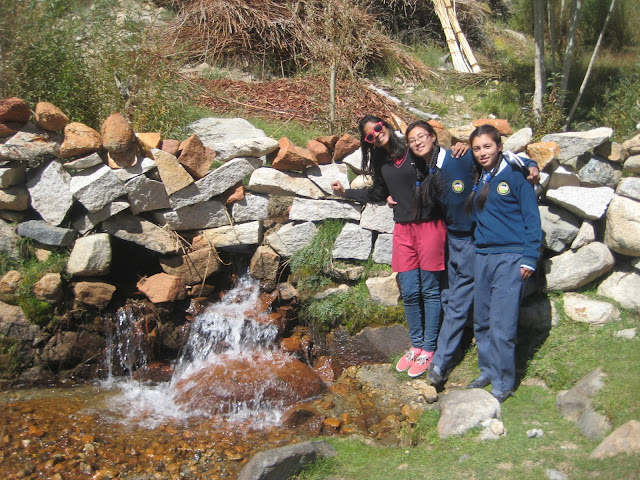I’ve been trying to drive down the point of The Greenhouse Effect, Global Warming and Sustainability with the notorious class 7 boys for weeks now. And it all just happened in one day on our field trip to Nang Village in collaboration with Ladakh Environment and Health Organization. LEHO is an NGO run by Dr. Deen and his wife with an idea to integrate age old traditions with modern sustainable practices and taking them to villages and teaching them various other such techniques, to make them self-sufficient.
Most of the students who study at the Mahabhodhi residential school hostel come from villages in and around Ladakh and take trips back to their villages during the winter and summer vacation. Through this trip they were inspired enough say that they will take back these technologies to their own villages, far and wide. I believe for them to just have this thought in their formative years is half the job done to ensure that one day they will give back to their communities, with the education they receive.
Our entire field trip was a five phase process where the First Phase involved taking the wrong route for an hour and a half along the Indus River, through the beautiful landscapes only to find ourselves lost. We however, finally managed to retrace our steps halfway to the Nang village which was tucked away behind a mountain, reachable only through steep sloped hills and extremely narrow semi pakka roads, not made keeping school buses in mind.
As we arrived closer, the terrain became greener. We saw small houses with Yaks and neighbors harvesting their crops together, trees changing color from greens to yellows and stone bricked fences lined between houses. We were soon received and briefed by Mr. Ajaz from LEHO who was just excellent with the kids and really probed them to think with his thoughtfully framed questions. We then took a short kilometer hike to the Second Phase of our trip; which was to see and learn about Artificial Glaciers. The hike was my personal favorite part of the whole trip, with green grass, pebbles, boulders and rocks; crossing crystal clear water streams and stopping to drink melted glacier water straight from the mini falls every now and then. They say bottled water is most expensive if packed at the source and here we were drinking it for free.
When we finally got up there, all we saw was what looked like parts of the Great Wall of China, misplaced its way to the wrong side of the border; which could’ve been possible- given were only a few hundred kilometers away from it. But when we were told that those walls were indeed the structures of the artificial glaciers, we were quite surprised by the simplicity and effectiveness of the theory behind a technology with such a complicated name.
The Third Phase involved hopping on to the bus again and visiting some local households with Green houses growing Strawberries! The extremely harsh cold conditions in Ladakh make it impossible to grow crops during winter; which lasts 7 months of the year. The kids learnt everything about greenhouses; from the direction they should face to the best angle to trap the sun’s heat and grow food during winter.
Phase Four helped make these greenhouses more productive with the heat generated through the Exothermic Reactions in the Compost Pits. The students learnt the A to Z of Composting- from the optimum temperatures needed for the bacteria to act upon the organic waste to the ideal moisture levels. To my surprise class 7 boys were well behaved and I think I even saw some of them take notes (unless they were pretending). Either way it was a great learning for each one of us. I included. It’ll be interesting to see the how the students fair at their follow up challenge. Stay tuned to know more.
Oh! I almost forgot. The Fifth Phase was when our field trip turned into a picnic as we stopped on our way back to eat lunch right by a mini water tank reservoir with snow clad mountains as the back ground. Need I say more? I’ll let the pictures speak for themselves.



















No comments:
Post a Comment